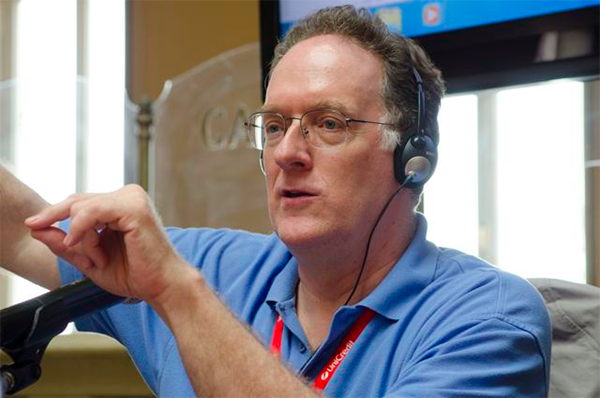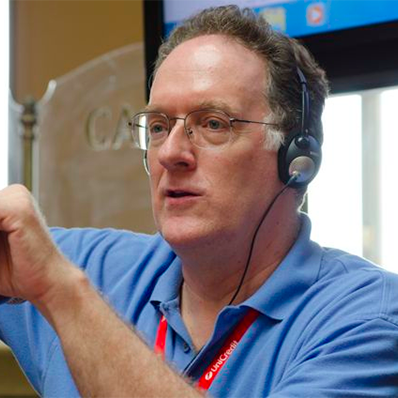by Rozina Sabur
 photo by Pietro Viti
photo by Pietro Viti
I noticed you describe yourself as a journalist in transition in your Twitter bio – what does that involve?
My current job ends in July. My company Digital First Media is shutting down the operation that I was part of, so I’m interviewing for other positions but I haven’t chosen my next position yet, so rather than identifying myself with the company, I thought I should reference to that transition. But then also I thought well aren’t we all in transition from whatever technology we used to use to what we’re using now to whatever we’re going to get next month or next year? So I meant on multiple levels, referring to my own current unsettled job situation but also to the status of journalism in reference to always learning new tools.
Perhaps data journalism isn’t the whole future, then?
That was entirely a business situation with the ownership of the company, so I think data journalism is with us to stay. The tools we use to access data, the accessibility of data – those things will constantly be changing – but I think I did my first data story 19 years ago. It’s not the future, it’s been to me a central part of journalism for decades now and I think will remain so.
What’s the most exciting data-orientated project you have worked on?
There are so many where data is central. I didn’t get to this example on the panel in our discussion on breaking news: but my story on the coverage of 9/11. I was working on how difficult or easy was it at that time to get a weapon onto an airplane. So I was interviewing some experts on airport security but I asked a colleague who was better than I was at that time on data journalism to see if we could access databases to get some information on security breaches at airports. He was able to download it that day to add the information to my story. I think it can be part of any story.
We recently did in Connecticut an analysis on how the police departments in the state follow their own laws on openness of police records. We actually visited all the 92 different police offices and asked for records and recorded what we got. We weren’t trying to get their data, but to tell that story we had to structure our reporting as data and do some analysis of that. To me it’s not a particular project, it’s almost every story that you work on. Either data is a part of it or it could be better if you thought of it with a data mind-set. We’ve done crime mapping, we collaborated with ProPublica with their free the files on election spending. To me it’s the depth and range of data rather than a particular project.
Referring back to the discussion panel we just had – with talk of fake videos in Arab countries and a U.S. mayor tweeting about the miners’ story – do you have particular criteria you follow for verification of stories?
Journalism is hard work and verification is some of the hardest work of journalism. It’s not that there is one way of identifying information. I did a story where I interviewed many eyewitnesses about a particular incident, and they were all wrong – and I was able to find a video from the incident. It was an incident 25 years ago so memory was the issue there. But even something happening now, perspective is everything. There have been fake stories that weren’t hoaxes…[but] failure to understand.
Eyewitnesses are a great source of verification – except when they’re wrong; video is a great source of verification – except when it’s wrong. Video was telling me the witnesses’ honest memories had been exaggerated. As we discussed in the panel, video isn’t always accurate either. So the journalist needs to triangulate from multiple angles these things and use different techniques. But any one of those can be wrong. So we have to ask of each of these things ‘how do you know that?’ and get the best version of the truth as we can from as many sources as we can.
Journalists – even young ones – may fear using data and these digital skills. What advice would you give? Is it hard to pick up?
I think we always need to be learning. It’s not hard to pick up – we can get very daunted. I remember when Storify came out I could tell it was going to be important…I set aside an afternoon to learn Storify and about 15 minutes later I had a free afternoon, because it’s not that hard. There are a lot more things you could learn, but most journalism tools are intuitive.
How do you come across these new things?
The NICAR Institute has a great list where data journalists help each other. At my company, Digital First Media, we have a great group of data journalists. Journalists are very helpful – we love to tell war stories and tell people how somebody did something. There’s always somebody that knows the answer so I think [it’s about] reaching out to other journalists, networking, reaching out in these emailing groups, coming to conferences like this where people can help.
One of the most important skills journalists can have is learning new tools. Because whatever tools are around right now, some of them are going to fail or be superseded by a new tool that you’re going to need to learn how to use. So learn how to learn.


